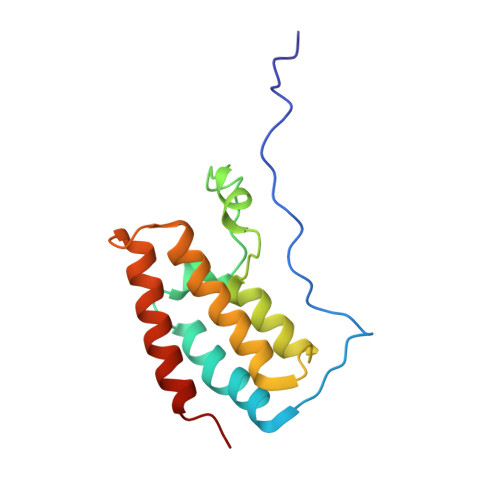Structural and thermodynamic characterization of the binding of isoliquiritigenin to the first bromodomain of BRD4.
Yokoyama, T., Matsumoto, K., Ostermann, A., Schrader, T.E., Nabeshima, Y., Mizuguchi, M.(2019) FEBS J 286: 1656-1667
- PubMed: 30565859
- DOI: https://doi.org/10.1111/febs.14736
- Primary Citation of Related Structures:
6AJV, 6AJW, 6AJX, 6AJY, 6AJZ - PubMed Abstract:
Bromodomain-containing protein 4 (BRD4) recognizes the acetylated lysine of histone H4 via its bromodomains, leading to the recruitment of positive transcription elongation factor b. Small molecules that inhibit BRD4 have potential as anticancer agents by leading to the downregulation of specific oncogenes. Using X-ray crystallographic screening, we identified the BRD4 inhibitory activity of isoliquiritigenin (ISL), a natural chalcone found in licorice. Structural analysis revealed that ISL bound to BRD4 with a novel binding mode and squeezed out one of the six conserved water molecules that form a strong hydrogen bond network. The thermodynamic analysis revealed that the binding of ISL is enthalpy driven, suggesting that strong hydrogen bonds would compensate for the desolvation penalty. Neutron protein crystallography further suggested that the favorable binding enthalpy originates from the stabilization and optimization of the hydrogen bond network of the conserved water molecules. Here, we describe the novelty and potential of ISL as a template for new BRD4 inhibitors.
Organizational Affiliation:
Faculty of Pharmaceutical Sciences, University of Toyama, Japan.
















